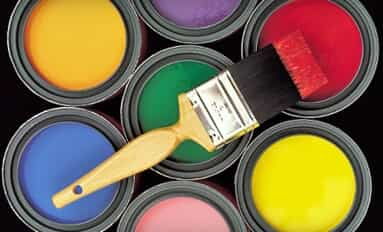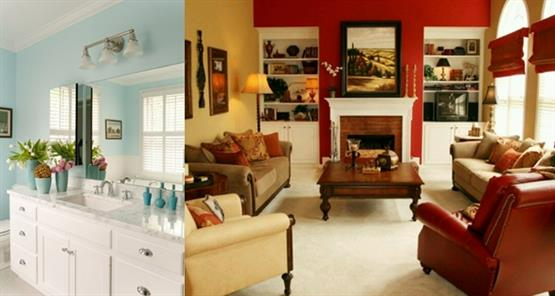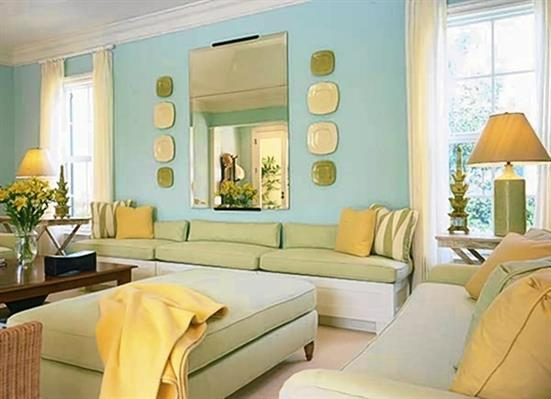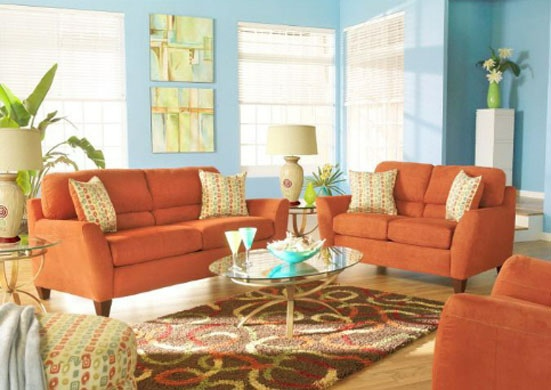Choosing Colors for Your Next Painting Project – Part 1: The Color Wheel

 The desire to change the look or feel of a space with a new coat of paint is an easy choice to make. Selecting the actual colors for your next painting project, however, can be much more confusing and stressful. In Part One of our series on color selection, we discuss the color wheel and color classification to help you determine where to start with your new color palette.
The desire to change the look or feel of a space with a new coat of paint is an easy choice to make. Selecting the actual colors for your next painting project, however, can be much more confusing and stressful. In Part One of our series on color selection, we discuss the color wheel and color classification to help you determine where to start with your new color palette.
The Color Wheel
Color schemes play a key role in deciding the mood, space, and light in a room. Dark areas can become bright ones, cold spaces warm up, dull may become cozy or even energetic all by selecting the right colors. That is why it is so important to know how to choose those colors.
Use the color wheel to steer you toward a set of harmonizing colors. Knowing how to look at the color wheel can be half the battle in picking a color palette. The color wheel is intuitive in composition as it already connects the colors that work well together. Selecting colors based on the wheel is a no-fail way to keep decor choices conservative when choosing colors for the first time.

Warm Colors & Cool Colors
The color wheel can be divided in half by the perceived temperatures of the colors: cool colors on the left side ranging from purple and blues to greens and warm colors on the right side ranging from yellows to reds. If one wants to cool down a room, try choosing colors on the left. If one wants to warm up a room, try choosing colors on the right.
Certain colors encourage certain emotions. For example blues and greens tend to reflect calm, quiet, and relaxation. Reds, on the other hand, can be a versatile color choice inviting feelings from excitement to warmth.

Analogous Colors
Colors sitting next to each other on the color wheel are analogous. Choosing the right analogous colors can create a safe set of colors that look orderly and consistent. Using a brighter or shinier hue of one color can create enough contrast to make the room look interesting. As show in the image below, color representation can easily extend beyond the walls of a room. Mix and match within the color scheme using furniture or artwork.

Complementary Colors
Colors sitting across from each other on the color wheel are complementary. Since complementary colors are opposites, they can be a riskier choice but possibly a more sophisticated palette for decorating. Using natural shades of complementary colors instead of basic hues can prevent clashing and appear cohesive and nuanced.

Understanding how to choose color based on the color wheel can give a homeowner a simple to match palette that portrays their preference of temperature, energy level, and visual appeal. After finding the right colors, the next step is to determine how they will be displayed in a room in Choosing Colors for Your Next Painting Project – Part 2: The Interior Design Rule. Finally, consider if your colors fit a room’s purpose in Choosing Colors for Your Next Painting Project – Part 3: Home Decorator’s Checklist.
This series of posts is meant to guide one to learning how to choose good colors. Spaces and tastes vary, however, and creating a new color scheme can be a difficult and time-consuming task. We recommend hiring a professional color consultant to help you pick the right colors.
Editor’s Note: This post was originally published in September 2013 and has been updated to improve content for our readers.
 Click to call
Click to call




